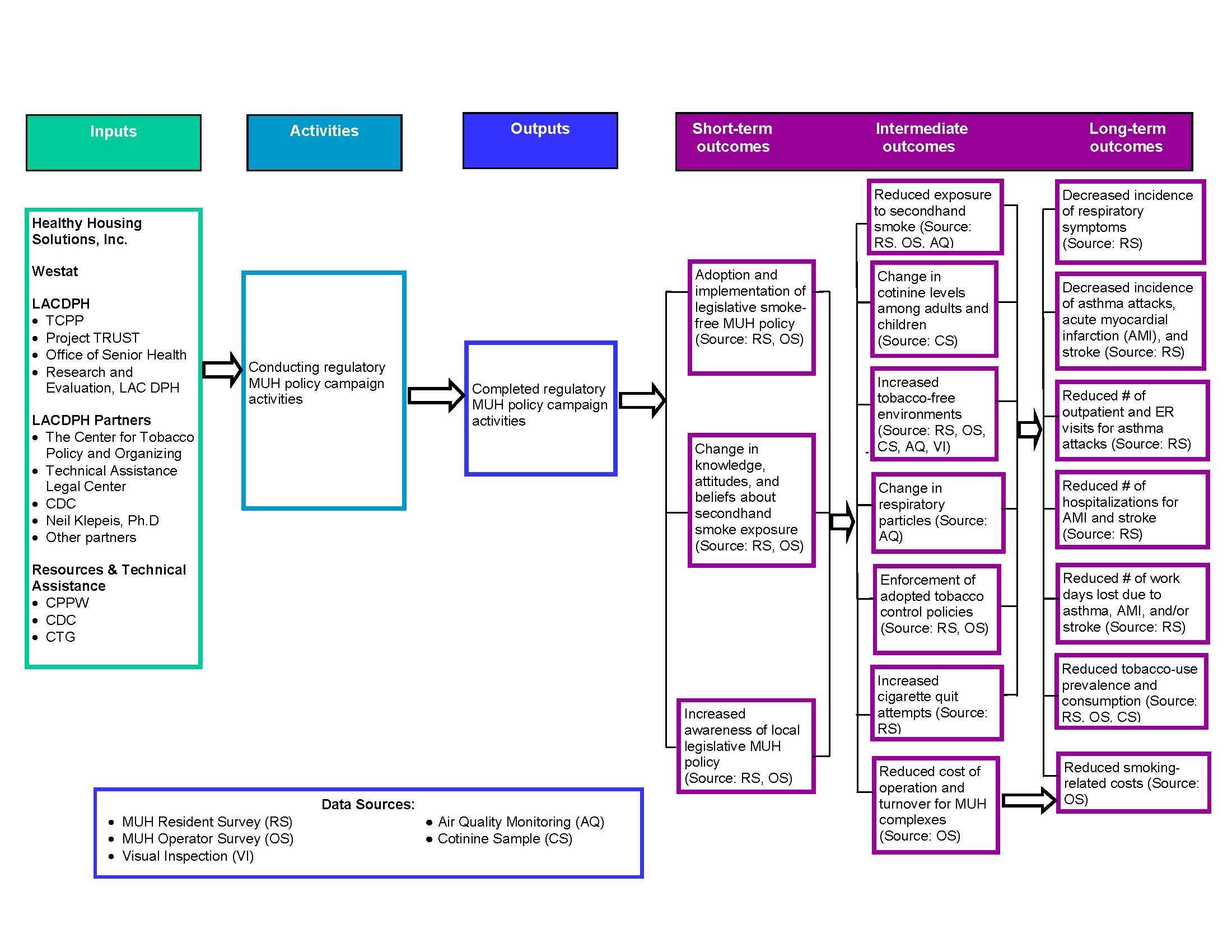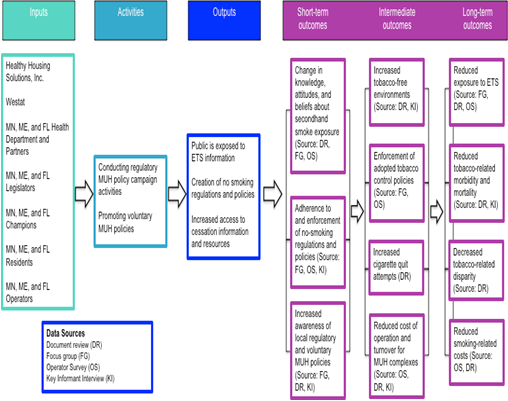Att 3d - Logic model
Att 3D Logic Model_8 27 2012.doc
Adoption, Health Impact and Cost of Smoke-Free Multi-Unit Housing Policies
Att 3d - Logic model
OMB: 0920-1004
Attachment 3D
The Logic Model
The logic model clarifies and guides our study’s research questions by specifying a conceptual blueprint delineating evaluation components and relationships among them. The model’s purpose is to graphically represent the relationships between an intervention and its intended effects, state the assumptions that underlie expectations that an intervention will work, and frame the context in which the intervention operates. Furthermore, the model informs the analysis plan and is based on templates already provided by CDC. Our Los Angeles logic model outlines how conducting policy campaigns based on the CPPW policy adoption model and voluntary smoke-free MUH policy activities impacts short-term outcomes like the adoption and implementation of smoke-free MUH policies, and changes in knowledge and attitudes about SHS exposure; intermediate outcomes like the reduced cost of operation and turnover for MUH complexes; and finally, long-term outcomes like reduced SHS exposure for the overall population. Our Minnesota, Maine, and Florida logic model focuses on how existing voluntary and regulatory policies were adopted and implemented, and focuses on short-term outcomes, such as resident self-reported changes in support for, engagement in the development of, and knowledge of implementation of smoke-free policies.
Logic Model for the Los Angeles
County Quasi-Experimental Pretest-Posttest Control Group Study

Logic Model – Minnesota, Maine, and Florida Data Collection

| File Type | application/msword |
| Author | ckawecki |
| Last Modified By | ckawecki |
| File Modified | 2012-08-27 |
| File Created | 2012-08-27 |
© 2025 OMB.report | Privacy Policy